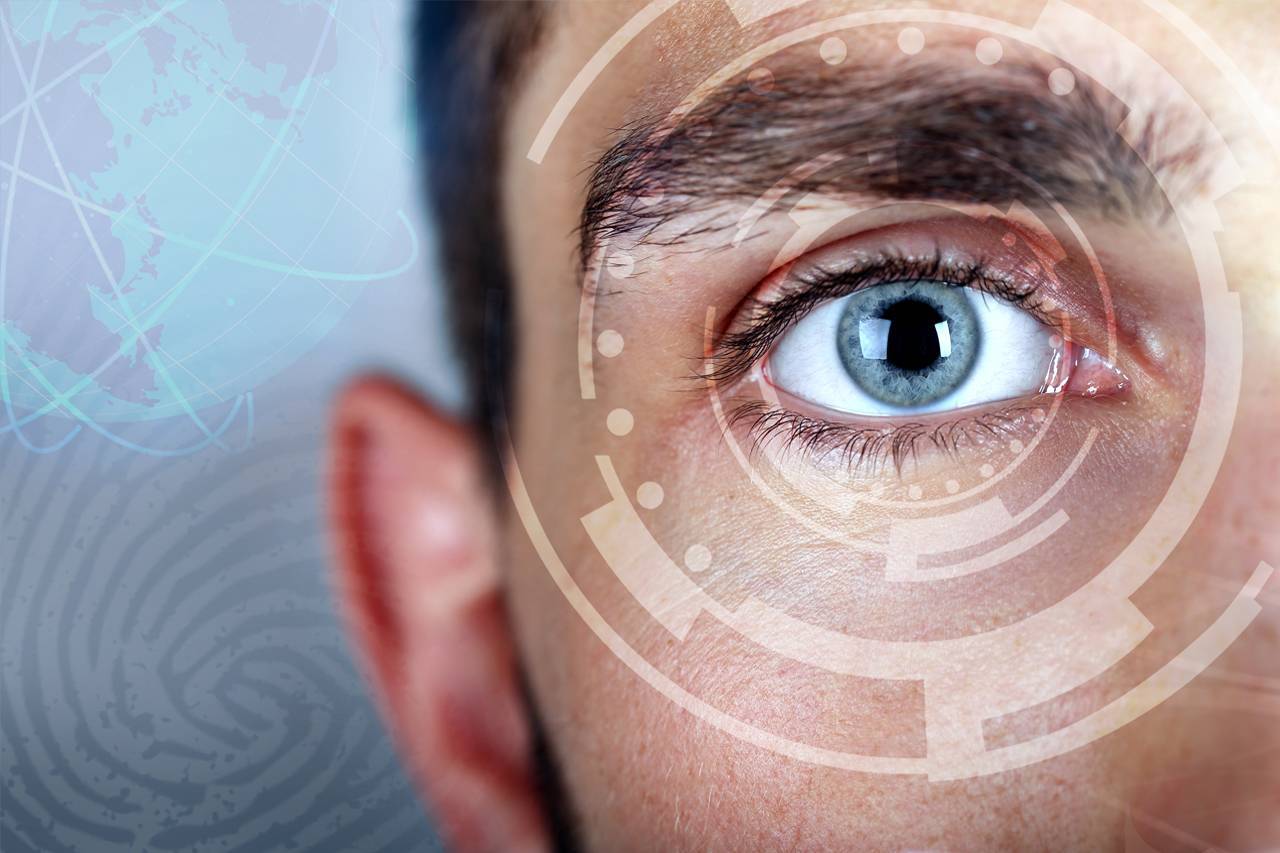Trust Dr. Yesnick To Co-Manage Your LASIK surgery In Las Vegas
Eye Surgery Co-management in Las Vegas
Convenient & Comfortable Eye Care for Ocular Surgery! We are pleased to offer you co-management for a full range of eye surgeries performed by leading specialists in the Las Vegas area. Working with the best ophthalmologists in the region, we will perform preoperative and postoperative eye exams, as well as monitor your condition with comprehensive follow-up care.
With Dr. Yesnick keeping watch on your ocular health, and expert ophthalmologists carrying out your eye surgery – you will benefit from an outstanding team working together to maximize your eye health!
LASIK and Refractive Surgery
If you are interested in LASIK or another refractive procedure, we will assess your vision condition and eye health to determine if you are a good candidate. In general, LASIK patients must be over age 18, have a suitable corneal thickness, and be in good overall health. Conditions such as dry eye, keratoconus, cataracts and scarring due to previous eye surgeries may disqualify you from having LASIK. In addition, your vision must be stable for at least one year before the procedure. If Dr. Yesnick determines that you qualify for LASIK or a different refractive operation, he will recommend an experienced eye surgeon located nearby in Las Vegas.
Postoperative Follow-Up After your eye surgery, you will require an eye doctor to check for proper healing and recuperation, and to instruct you on how to help keep your eyes healthy. The ophthalmologist can transfer your post-op care over to our optometry team. There’s no need to return to the hospital or surgical center. In this way, it is simple and easy to receive compassionate follow-up as your vision heals. Dr. Yesnick will provide exceptional postoperative co-management in the comfort of our pleasant Las Vegas clinic!

Trust Dr. Yesnick To Co-Manage Your LASIK surgery In Las Vegas
Eye Surgery Co-management in Las Vegas
Convenient & Comfortable Eye Care for Ocular Surgery! We are pleased to offer you co-management for a full range of eye surgeries performed by leading specialists in the Las Vegas area. Working with the best ophthalmologists in the region, we will perform preoperative and postoperative eye exams, as well as monitor your condition with comprehensive follow-up care.
With Dr. Yesnick keeping watch on your ocular health, and expert ophthalmologists carrying out your eye surgery – you will benefit from an outstanding team working together to maximize your eye health!
LASIK and Refractive Surgery
If you are interested in LASIK or another refractive procedure, we will assess your vision condition and eye health to determine if you are a good candidate. In general, LASIK patients must be over age 18, have a suitable corneal thickness, and be in good overall health. Conditions such as dry eye, keratoconus, cataracts and scarring due to previous eye surgeries may disqualify you from having LASIK. In addition, your vision must be stable for at least one year before the procedure. If Dr. Yesnick determines that you qualify for LASIK or a different refractive operation, he will recommend an experienced eye surgeon located nearby in Las Vegas.
Postoperative Follow-Up After your eye surgery, you will require an eye doctor to check for proper healing and recuperation, and to instruct you on how to help keep your eyes healthy. The ophthalmologist can transfer your post-op care over to our optometry team. There’s no need to return to the hospital or surgical center. In this way, it is simple and easy to receive compassionate follow-up as your vision heals. Dr. Yesnick will provide exceptional postoperative co-management in the comfort of our pleasant Las Vegas clinic!
LASIK (laser-assisted in situ keratomileusis) is a type of laser refractive surgery — the best known and most commonly performed. A special type of sculpting laser is used to meticulously change the shape of your cornea to improve your vision.
With the normal eye, images are clearly focused on the retina in the back of your eye because the light rays are bent properly to contact the retinal surface. People with these vision problems have the lights bending incorrectly, thereby resulting in blurred vision. While glasses or contact lenses are used to correct the refractive error, reshaping the cornea itself has proven to provide the necessary correction, hence a more lasting solution.
-
- For people with nearsightedness (myopia), LASIK is used to flatten a cornea that is too steep.
- Farsightedness (hyperopia) would require the LASIK procedure to achieve a steeper cornea.
- For astigmatism, LASIK corrects it by shaping the irregular cornea into a normal rounder shape.

To us at Yesnick Vision Center, your vision and comfort are paramount. Your eyes deserve a tech-savvy, meticulous and personalized approach. Our experienced laser vision staff will provide you with the best vision in the most non-invasive way possible. Our procedure involves an innovative technology that creates a map that is absolutely specific to your visual pathway. This map is what the LASIK surgeon uses to calculate a highly accurate, customized procedure to correct your vision to perfection.
We learn about your individual lifestyle and medical history so that we can provide you with the ideal outcome. Our goal is to make your visit pleasant, provide you with a gentle, anxiety-free experience and at the end, ensure you leave our Las Vegas office free from eyeglasses and contact lenses.
Our eyes are unique, just like our fingerprints, and we each have a unique “map.” We begin by creating a 3-D analysis of your eyes’ imperfections. This is done using a corneal topographer with Wavefront-guided technology. The system is twenty five times more precise than the conventional measurements used for contact lenses and eyeglasses. It can measure and correct errors that were not otherwise detected. The eye doctor then evaluates your prescription stability, corneal health, shape, and thickness, tear layer, pupil size, and the severity of existing conditions.
You’re almost ready to commence treatment. To ensure optimal success of the procedure, we use an ultra-fast Femtosecond Laser, built from a legacy of innovative technology to begin the procedure. A thin flap is created using the femtosecond laser and is customized to your unique eye shape. The cornea is now ready for treatment.
Armed with the digital data from your personalized eye map, our doctors will begin the procedure by gently reshaping the cornea to the desired curvature, using an ultra-precise STAR S4 IR® Excimer Laser. The flap is put back into place afterwards with no stitches required, and you’re done!
Amazingly, the entire process takes only about 20 minutes. You will be provide with medication to help you relax, as well as numbing eye drops to help you stay comfortable throughout the procedure. You’ll feel some sensational pressure on your eye for less than a minute. Moments later, you’re ready to go home.
Within 24 hours, you’ll feel reborn! For the first time — in probably a long time — you’ll go about your day without all the hassles of glasses or contact lenses. Most people resume normal and unstrenuous activity by the next day. In fact, it takes only one day out of your schedule to experience a lifetime of vision like you've never had before! Studies show that patients often comment "Why did I wait so long to have this done?". You’ll be back to your normal daily routine before you know it, feeling better, happier, and with more confidence.
LASIK is performed in an outpatient suite in a laser center. In readiness for the procedure, you will be comfortably reclined under a pain free laser. Although you can resume most normal activities the next day, it usually takes three to six months after the LASIK procedure for improvements in a person’s vision to fully stabilize.
Step 1
First, the eye is numbed with a few drops of topical anesthetic. An eyelid holder is placed between the eyelids to keep them open and prevent the patient from blinking. The other eye is immobilized. A suction ring is then placed on the eye which lifts and flattens the cornea and helps keep the eye from moving. You may feel pressure from the eyelid holder and suction ring, just like you would if a finger is pressed firmly on your eyelid.
Step 2
Vision will appear dim or go black as the suction ring is placed on the eye and will return when it is removed a minute or less later. Once the cornea is flattened, a hinged flap of corneal tissue is created using a painless, blade free automaed laser. This corneal flap is gently lifted and folded back. Then the preprogrammed excimer laser with your unique eye measurements is centered above the eye.
Step 3
The laser is positioned correctly while you look at a special pinpoint light called a fixation and tracking light. The excimer laser then sculpts the corneal tissue to your prescription. Then the flap is replaced into the exact previous position. The corneal flap sticks to the underlying corneal tissue within two to five minutes, and stitches are not needed.
Step 4
You should make arrangements for someone to drive you home after the procedure and then take a nap or just relax. Often times you may need to wear a shield to protect the eyes when sleeping. The surgeon will also provide eye drops to help the eye heal quickly and relieve dryness.

A complete eye examination will be required by Dr. David Yesnick . You are also required to bring your most recent eye prescription and/or your eyeglasses with you to the initial exam. You will then need to stop wearing contact lenses a week or more before your final pre-operative evaluation. At this visit, Dr. David Yesnick will dilate your pupils to fine-tune your prescription, examine your eyes to ensure they’re healthy, including testing you for glaucoma, performing a retinal exam, and assessing for dry eye
The curvature of your cornea and your pupils will also be measured, alongside the corneal topography of your eyes; just to ensure you do not have conditions that may disqualify your candidacy. The thickness of your cornea will also be evaluated to confirm you have enough tissue to perform the procedure safely.
You will be asked to sign an informed consent form after a thorough discussion of the risks, benefits, options, and possible complications of LASIK. It is important to review the form carefully and understand everything in it.
LASIK is an outpatient procedure performed in Las Vegas. The surgeon will begin by applying an eye drop that numbs the surface of the eye. The procedure takes about 10 minutes for each eye.
The Procedure: The eye is moistened. A specialized device is positioned to keep the eye from moving, placing the central cornea in the correct position. Then a special laser, called a femtosecond laser, creates a hinged flap of thin corneal tissue, at which time the flap is lifted. A special second laser, called the excimer laser, gently reshapes the underlying corneal tissue, and then the corneal flap is precisely repositioned and quickly adheres to the eye with no stitches.
The healing process is relatively quick. You can resume most normal activities the next day; however, you may wish to take a few days off from work and other activities. Do not engage in moving sports activities for a week after the procedure.
Impact sports or similar activities may have to wait for as long as four weeks. Be aware that you may experience a mild burning sensation for a few hours after the procedure. Do not rub your eye for at least six months. The day of procedure is a day of no expectation and blurry vision is normal.
You can expect a considerable improvement by the next day as you return for your follow up evaluation. Report any unusual or aggravating side effects immediately. Do not drive until your vision has improved comfortably. Avoid swimming, hot tubs, and whirlpools for at least two weeks after the procedure. For any concerns after surgery, Dr. David Yesnick and the team at Yesnick Vision Center are available for all questions and concerns.

LASIK, like any procedure, has potential risks and complications that should be carefully considered. Since it was approved by the FDA in 1996, LASIK has become a very popular treatment in the United States and the overall complication rate is exceedingly low. Infection is rare as with any procedure and can be well treated.
For regular LASIK, side effects usually disappear over time. These side effects may include hazy or blurry vision; difficulty with night vision and/or driving at night; scratchiness, dryness and other symptoms of the condition called "dry eye"; glare, light sensitivity; halos or starbursts around lights; discomfort or pain; or small pink or red patches on the white of the eye. Our advanced laser vision technology has an excellent track record of minimizing or eliminating reported side effects or complications.
In rare cases, a second procedure, called a retreatment or enhancement, may be indicated in order to achieve the optimum desired visual outcome. This is more likely for people who have extreme cases of nearsightedness, farsightedness, or had higher astigmatism before LASIK — those whose vision originally needed more intensive correction. At Yesnick Vision Center we have a history of great outcomes from LASIK with patients seeing us from Las Vegas, Spring Valley, Summerlin, and Henderson.
At the May 2016 annual meeting of the American Society for Cataract and Refractive Surgery – the medical organization of surgeons specializing in vision correction and cataract surgeries – updates of several high-profile research studies of LASIK safety and performance, including the FDA PROWL study, were presented showing impressively and consistently high marks for safety, outcomes, as well as patient satisfaction.
Ultimately, these studies support the overwhelming body of clinical evidence proving LASIK is a safe and effective vision correction option for those who qualify. Remarkably, these studies report the procedure is more likely to help symptoms of dry eye, glare, halo, starbursts and ghosting than it is to cause symptoms. Especially, noteworthy for those who previously wore contact lenses.
Two results of two studies in particular, the U.S. Food and Drug Administration-sponsored “Patient Reported Outcomes with LASIK (PROWL)” and an evaluation of the available scientific literature worldwide on advanced LASIK entitled, “Modern LASIK Outcomes: A Review,” conducted by ASCRS president Kerry D. Solomon, M.D., have been much anticipated by vision correction surgeons.
“Although each take a different investigative approach, these studies provide some of the best data and insights into LASIK, particularly from the patient’s perspective,” said Daniel S. Durrie, M.D. and one of the clinical investigators for the FDA PROWL study. “One of the key findings, from both studies, is with modern equipment, modern techniques and well-selected patients; good surgeons can deliver terrific results with a high degree of safety. LASIK is a great procedure.”
The FDA PROWL research was conducted as prospective, post-market, observational studies designed to develop and evaluate a patient reported outcome questionnaire for use post-LASIK. Approximately 574 subjects (262 active duty military personnel, 312 civilians from 5 investigational sites) were enrolled and asked to fill out an online questionnaire before LASIK and 3-months after LASIK.
The “Modern LASIK Outcomes: A Review” updated the work from the “LASIK World Literature Review: Quality of Life and Patient Satisfaction published in 2009 by analyzing the impact of advanced treatment profiles in LASIK (employing femtosecond laser keratomes and wavefront diagnostic/guidance). In the current work, nearly 4500 clinical study papers on the topic of LASIK were evaluated for relevancy and authority. The final data set included 97 high-quality studies that combined represented 67,893 procedures.
These substantial studies made fresh inquiries into the basics of LASIK: Is it safe? Does the procedure improve vision? What is the potential for side effects? The findings from these studies affirmed the consensus of previous research into LASIK performance:
- Patient satisfaction rate of up to 98 percent.
- Nearly 100 percent of patients achieving at least 20/40 vision, with more than 90 percent achieving 20/20 vision.
- Less than 1 percent of patients lost two or more lines (on the eye chart) of best corrected visual acuity (BCVA).
There was particularly good news out of the FDA PROWL study about the potential for side effects, including dry eye and other visual symptoms such as glare, starbursts, ghosting and halos, post LASIK.
For dry eye, more than half of patients (59%) with dry eye symptoms before surgery reported having no symptoms of dry eye 3-months after LASIK. For those reporting residual dry eye symptoms, there were statistically significant decreases in the severity of symptoms at 3 months post LASIK
For those patients with no symptoms of dry eye prior to surgery, approximately 30 percent reported experiencing symptoms at 3 months after LASIK. The typical clinical experience with dry eye post LASIK is a gradual improvement of symptoms throughout the healing process, up to one year after surgery.
LASIK also benefited those with visual symptoms (glare, starbursts, ghosting and halos) before surgery. More than twice the number of patients reported their pre-operative visual symptoms were gone at 3-months than those who reported an increase in symptoms at 3-months.
While a small percentage of patients may experience symptoms during the healing process, by working closely with your surgeon your symptoms can be managed and, if needed, treated to help you achieve your vision goal.
The results of these studies are consistent with the clinical experience of LASIK and underscore the commitment of surgeons and researchers to continually investigate the potential of this valuable option in vision correction. Through efforts such as these, clinicians are able to find ways to improve the technology, technique and overall patient experience with LASIK, making an already good procedure even better.
Culled from American Refractive Surgery Council https://americanrefractivesurgerycouncil.org/new-research-lasik-safety-performance-continue-to-impress/
REFERENCES
American Academy of Ophthalmology https://www.aao.org/eye-health/treatments/lasik
Federal Trade Commission consumer information https://www.consumer.ftc.gov/articles/0062-basics-lasik-eye-surgeryAmerican Refractive Surgery Council https://americanrefractivesurgerycouncil.org/new-research-lasik-safety-performance-continue-to-impress/
US National Library of Medicine https://medlineplus.gov/lasereyesurgery.html


